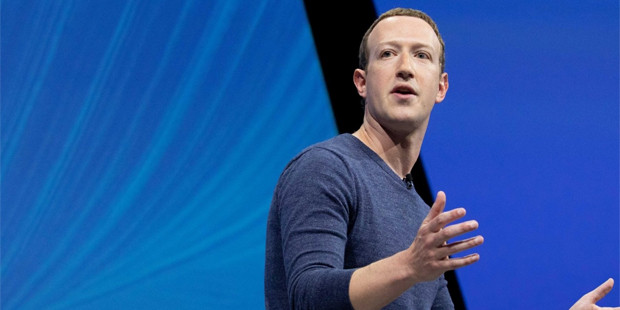5 Leadership Styles to Improve Workplace Collaboration

Collaboration is key for every organization no matter what industry. Even if it has less than five employees, it is still highly important that everyone work together so that the organization can achieve its long-term goals. At the forefront of every organization is a leader possessing outstanding leadership qualities. Here are five business management styles that are best for workplace collaboration:
1. Democratic Leadership
Democratic leadership is one of the most common team leadership styles but is also one of the most effective. In essence, this leadership style revolves around making a decision based on everyone’s inputs. Before a leader makes the final call, he or she first consults everyone in the team or organization and analyzes all of their opinions and comments. What makes democratic leadership an effective leadership style is that allows lower-ranking individuals to voice out their concerns without the worry of getting reprimanded. With collaboration being an important aspect of every organization, especially for a profit-based company, the input is everyone is needed so that the work can be accomplished effectively and efficiently.

One of the famous female leaders who is known to practice a democratic style of leadership is General Motors CEO Mary Barra. In a 2014 interview, she mentioned that GM’s success “will depend on relationships inside and outside the company with the company also encouraging diverse thinking and collaboration.” Under her participative leadership, GM maintained its position as a global leader in vehicle manufacturing with the company achieving record-high revenues in 2014 and 2015 ($155.9 billion and $155.7 billion respectively).
2. Strategic Leadership
Strategic leadership is similar to democratic where leaders provide support for their employees. But unlike democratic leaders, strategic leaders rely on the notion that there is no better leader in the organization than themselves; convincing their peers to work on their vision and not the vision of anyone else. Once the members are on board, this is where the leaders do their best to get their inputs.
This leadership style is great for collaborative work as it aims to develop an environment where employees forecast the organization’s needs in the context of their own job. Strategic leaders with excellent leadership skills are experts when it comes to forecasting and understanding the workforce and the overall work environment. One notable strategic leader is Microsoft founder Bill Gates, who famously pitched a meeting with investors in 1975 even before he developed code for the system that would eventually become the first iteration of the Windows PC. Today. Microsoft is one of the biggest computer hardware and software companies in the world.
3. Transactional Leadership
Unlike democratic leadership, transactional leadership relies on the person/s at the top to make the decisions for the entire organization. A transactional leader relies on order and structure and never deviates from them even if slight changes don’t affect the overall product. This type of leadership style is best for individuals managing military operations or managing large corporations. Since a transactional leader relies on order above anything else, this may not be a perfect fit for individuals or employees relying on innovation and creativity to succeed.

Nonetheless, this leadership style has been proven to be successful on numerous occasions, most especially Elon Musk in managing one of the world’s top car manufacturers Tesla. Musk has been known to possess very high standards and limiting the autonomy of his employees even for senior-level executives. With this, every decision whether it be as small as a slight decrease in manufacturing costs or an adding a new color for a current model will have to go to the Tesla CEO himself. Tesla’s very limited decision-making process has benefited the company so far, seeing increased revenues every year with the company raking in a record-high $31 billion in revenues for 2020.
4. Laissez-Faire Leadership
Developed by the French during the 18th century, laissez-faire (which translates to “let it go” and “let it be”) is one of the basic leadership styles that doesn’t need much explanation. It simply pertains to leaders placing full trust and reliance on their employees. Although this doesn’t mean employees will be running the company on behalf of their managers or CEOs, laissez faire leadership relies on individuals working together and utilizing creativity to achieve success.
In an organization practicing this type of leadership, employees are given all the tools and resources to come up with effective and efficient solutions with supervisors/managers only acting as consultants and advisors. Micromanagement is completely absent in this leadership style. Berkshire Hathaway CEO Warren Buffet (6th richest person in the world) is known to practice laissez-faire despite running a billion-dollar company, surrounding himself with qualified people and only intervening when only necessary.
5. Coaching Leadership
Some of the leadership traits of coaching leaders include taking advantage of employee strengths and improving their weaknesses. This leadership style also relies on constant motivation to make sure individuals meet both short-term and long-term goals. Although coaching leadership has been more associated with sports, it has become a common leadership style used by leaders across different industries.

An effective coaching leader (or simply called a “coach”) possesses high emotional intelligence and identifies each strength and weakness of the members of his team. Once he has this information, he then processes or strategies wherein each member can maximize their strengths. These processes also help individuals slowly improve on their weaknesses. Facebook Co-Founder and CEO Mark Zuckerberg is known to practice this leadership style on numerous occasions, empowering people in his company to develop new innovations when it comes to social media as well as providing them the needed tools to succeed in their work.
Final Thoughts
There is no one-size-fits-all solution or best leadership style when it comes to the workplace. Numerous factors will need to be taken into account and leaders will need to constantly adjust depending on the situation they are faced with. But if one thing is for certain, the common leadership styles listed above have proven to be effective especially in making sure each member of the organization works together to perform their best on a consistent basis.









